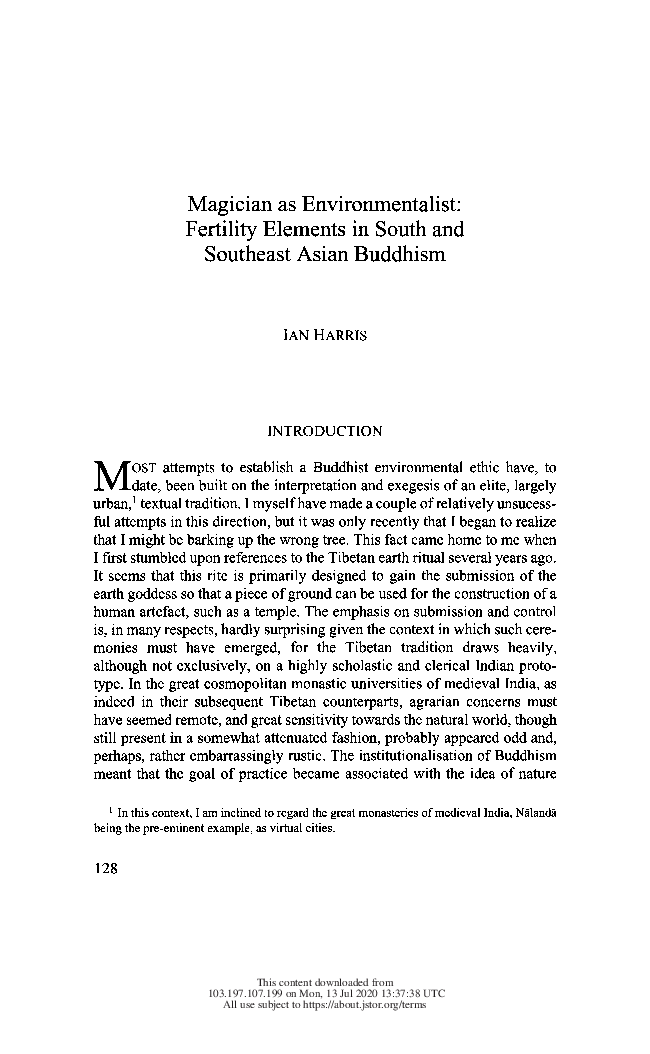Magician as Environmentalist: Fertility Elements in South and Southeast Asian Buddhism
by Ian Harris
Buddhism, 'natural order' and agrarian rites in Southeast Asia.

- Publication
- The Eastern Buddhist NEW SERIES, Vol. 32, No. 2, pp. 128-156 | Eastern Buddhist Society
- Published
- 2000
- Author
- Ian Harris
- Pages
- 29
- Language
- English
pdf 2.0 MB
Environmental concerns, in Ancient history, were mostly dealing with natural events (in particular rain) and agricultural considerations.
The author has some interesting notations regarding Nang Thorani, the Buddhist Earth goddess: “Nang Thorani’s iconography cannot be traced to Indian or Sri Lankan sources but in Cambodia and Thailand her image is found at the entrance to almost every Buddhist wat where she is represented standing [though occasionally seated] ringing water out of a thick braid of hair which she has brought over her left shoulder. Coedès, who has traced the legend on which the iconography is based to the Pali Pathamasambodhi, an anthology of biographical accounts of the Buddha’s life known only in Southeast Asia, has argued that the figure probably has an Indo-Chinese origin. The text informs us that her hair was soaked with water libations made in honour of the bodhisatta’s liberality when living his penultimate existence as Vessantara.”
The author’s Table of corresponding religious ceremonies and rice growing phases.
Photo: Rice planting in Angkor area (visit-angkor.org)
Tags: agriculture, agrarian rites, rice, magic, divination
About the Author

Ian Harris
Ian Harris is reader in Buddhist studies at University College of St. Martin, Lancaster, and associate fellow, Becket Institute, St. Hugh’s College, Oxford.

